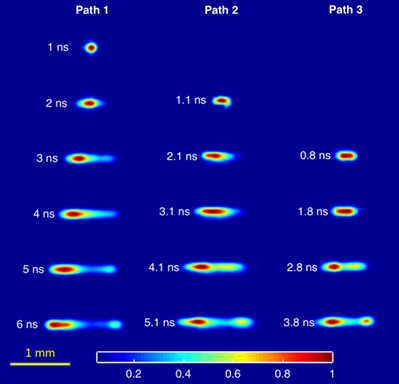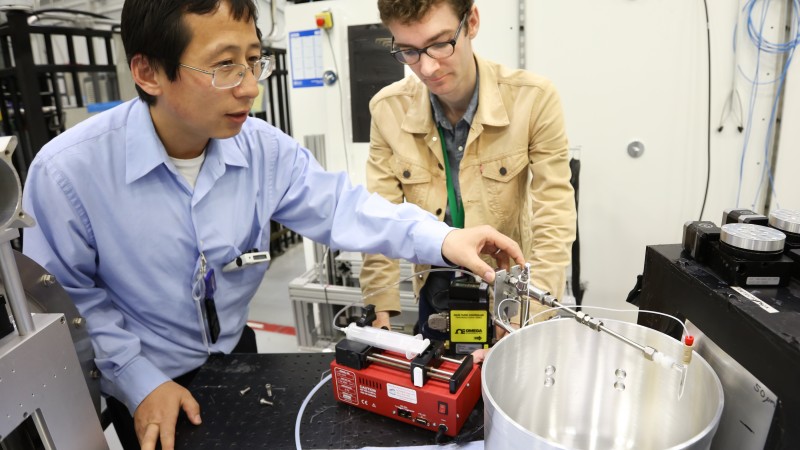Don’t blink, or you’ll miss it – unless you’re Associate Professor Zhili Zhang, of Mechanical, Aerospace, and Biomedical Engineering.
Zhang built a career around laser diagnostics and optical imaging, research that enables the visualization and study of ultrafast processes. He earned his PhD in mechanical and aerospace engineering from Princeton University in 2008, which laid the groundwork for his current research.
As part of Princeton’s applied physics group, Zhang began exploring the use of lasers to view objects traveling at hypersonic speed, or speeds that greatly exceed the speed of sound. Nowadays, there is an increasing demand for high-speed imaging across broad applications in science, physics, and engineering, making his work all the more opportune: he’s developed a novel high-speed imaging method with higher resolution at faster speeds than current technologies.
Zhang’s technology arose from a practical problem: cost efficiency. He recalls attending a federal government convention in Arlington, Virginia, where government scientists showed off an imaging lab stocked with eight high-speed cameras, each costing more than $200,000. The top-of-the-line cameras grow obsolete in only a handful of years, necessitating their replacement to the tune of millions of tax-payer dollars.
It’s extremely difficult to keep pace with evolving camera technology. How can any academic keep up with this expensive technology in their research?”
Determined to help minimize this obstacle, he partnered with Mark Gragston, now a research professor at the UT Space Institute, to find an alternative. The team drew inspiration from a slow-moving technology developed in the early 2000s that spatially modulates light to illuminate a target. They identified a great opportunity to apply this approach to high-speed cameras, and as a result, a brand-new imaging technique was born: the Multiplexed Structured Image Capture, affectionately dubbed MUSIC.

With laser-induced plasma as an imaging target, Zhang and his fellow researchers use spatial modulation to split incoming light into multiple arms with distinct coding. While the camera captures an image just like any household camera, the light is captured in snapshots at distinct moments in time. The result is a single shot comprised of multiple individual images, reconstructed with computer processing. The multiple individual images reveal high-speed dynamics that enable the imaging target’s evolution on a nanosecond scale to be seen.
So what sets MUSIC apart from the technology of other high-speed cameras on the market? Zhang’s technology is not only a fraction of the cost of current commercially available high-speed cameras, it’s also more efficient. MUSIC can capture up to one billion frames per second, compared to similar commercial cameras’ one million. It also captures around 300 pixels in an image, while images from typical high-speed cameras generally contain less than 10 pixels. In fact, MUSIC essentially frees high-speed imaging from the limits of traditional camera technology, since its encoding method bypasses the limits of camera shutters with the highest speeds.
Zhang submitted an invention disclosure for MUSIC to the University of Tennessee Research Foundation last year, and UTRF immediately saw the potential in the technique.
“This is a very universal innovation that can be used with any camera,” explained UTRF Licensing Associate Andreana Leskovjan. “It paves the way for cost-efficient, real-time imaging and characterization of ultrafast processes and tracking of fast objects.”
Based on positive feedback from companies during marketing outreach, UTRF chose to file a patent application for the technology earlier this year.
In addition to MUSIC, Zhang is hard at work helping develop hypersonic vehicles—he’s currently researching the use of laser optics to study hypersonic combustion and fuel options.
This Inventor Spotlight originally appeared on the UTRF website.
